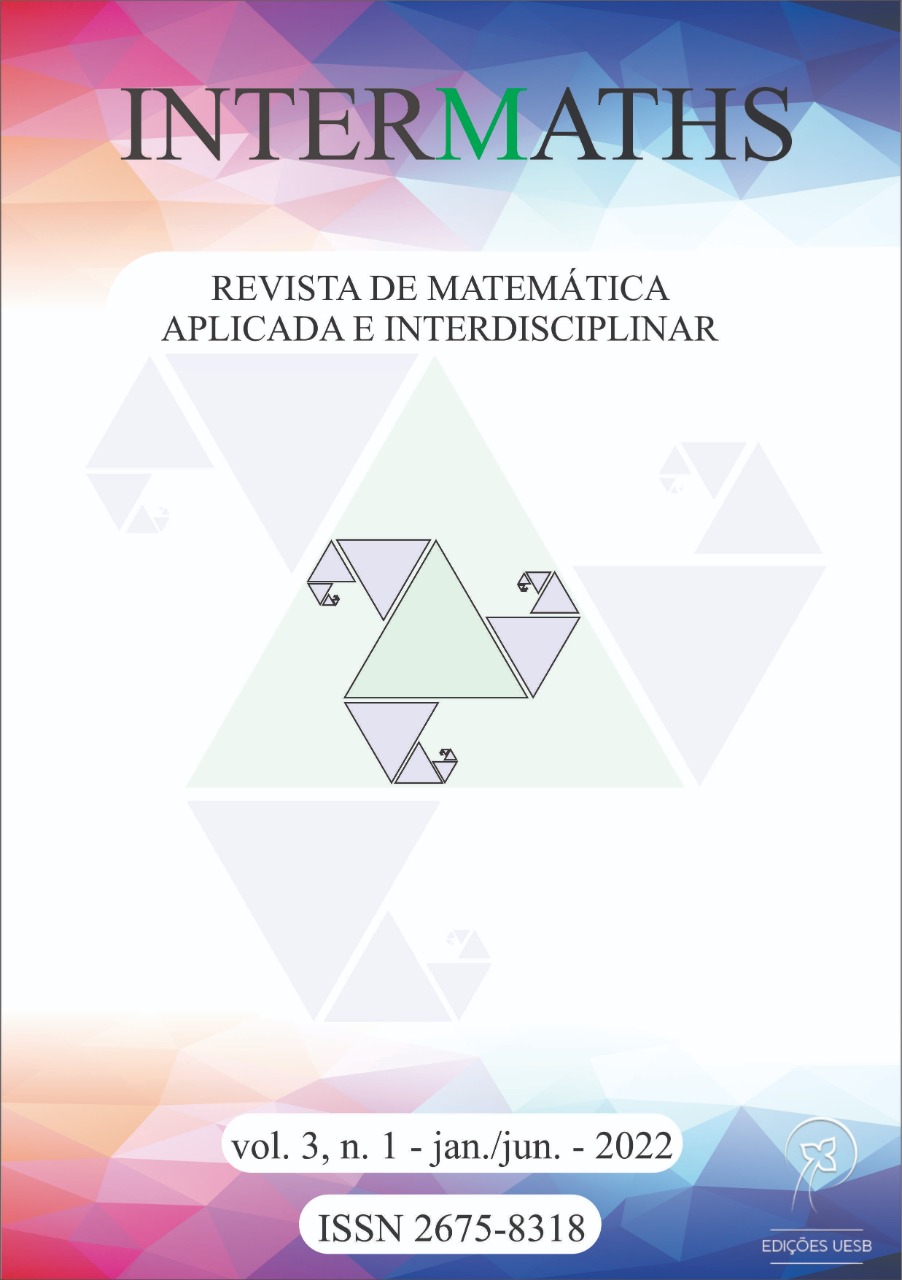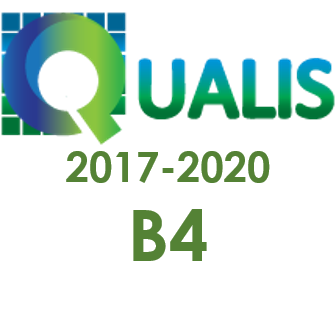Training teachers in the scope of competences of geometric reasoning: a literature review
DOI:
https://doi.org/10.22481/intermaths.v3i1.10477Keywords:
Geometric reasoning., Mathematical knowledge., Geometric thinking., Didactic knowledge., Teacher training.Abstract
This article presents a literature review in the context of an ongoing doctoral project, which focuses on the knowledge and geometric skills of mathematics teachers, in order to sustain research on a continuous training program of Angolan teachers. It aimed to standardize practices of training of mathematics teachers in the context of Geometry. Five search terms were established, which coincide with the keywords, in three different languages whose sources were selected taking into account quality assurance, relying on the choice of databases and repositories for research taking into account criteria previously defined for the composition of the documentary corpus composed of 15 articles developed in different contexts, that have been the subject of analysis. One of the results of the analysis showed the meager geometric knowledge of teachers, which suggests the need to design specific training actions in the context of geometric reasoning in the current plans of continuous training of mathematics teachers aiming, on the one hand, to empower the teacher with knowledge and skills to better teach the subjects on these contents and, on the other hand, to awaken in the student the interest in the discipline.
Downloads
References
M. T. Battista, “The Development of Geometric and Spatial Thinking”. In Second Handbook of Research on Mathematics Teaching and Learning, F. Lester (Ed.), Charlotte, NC: Information Age Publising, 2007, pp. 843-908.
A. J. Bishop. “Review of research on visualization in mathematics education”. Focus on Learning Problems in Mathematics, 11(1), 1989, pp. 7-16.
D. H. Clements and M. T. Battista. “Geometry and spatial reasoning”. In Handbook of Research on Mathematics Teaching and Learning, D. A. Grouws (Ed.), New York: Macmillan Publishing Co., 1992, pp. 420-464.
A. Gutiérrez. “Uso de definiciones e imágenes de conceptos geométricos por los estudiantes de magisterio”. In El proceso de llegar a ser un profesor de primaria. Cuestiones desde la educación matemática, Giménez et. al. (Eds.), Granada: Comares, 1996, pp. 143-170. https://doi.org/10.2307/j.ctv103x9s5.12.
R. Hershkowitz, B. Parzysz and J. Van Dormolen. “Space and shape”. In International Handbook of Mathematics Education, A. J. Bishop et. al.(Eds). London: Kluwer, 1996, pp. 161- 204. https://doi.org/10.1007/978-94-009-1465-0_7
N. C. Presmeg. “Research on visualization in learning and teaching mathematics”. In Handbook of research on the psychology of mathematics education: Past, present and future, A. Gutiérrez and P. Boero (Eds.), Rotterdam, The Netherlands: Sense Publishers, 2006, pp. 205-235. https://doi.org/10.1163/9789087901127_009
National Council of Teachers of Mathematics (NCTM), “Principles and Standards for School Mathematics”. EEUU: National Council of Teachers of Mathematics, 2000. https://doi.org/10.17226/9870
MEC. Real Decreto 1513/2006, de 7 de Diciembre, por el que se Establecen las Enseñanzas Mínimas de la Educación Primaria, 2006.
C. Loureiro, “Geometria no Novo Programa de Matemática do Ensino Básico. Contributos Para Uma Gestão Curricular Reflexiva”, 2009.
A. Breda, L. Serrazina, L. Menezes, L. Sousa and P. Oliveira, “Geometria e Medida no Ensino Básico”. Direção Geral de Inovação e Desenvolvimento Curricular. Lisboa: Ministério da Educação, 2011.
J. D. Godino. “Indicadores de la idoneidad didáctica de procesos de enseñanza y aprendizaje de las matemáticas”. XIII CIAEM-IACME, Recife, Brasil, 2011. https://doi.org/10.18050/eduser.v6i3.2406
J. D. Godino. “Origen y aportaciones de la perspectiva ontosemiótica de investigación en Didáctica de la Matemática”. In Investigación en Educación Matemática, A. Estepa, A.
Contreras, J. Deulofeu, M. C. Penalva, F. J. García and L. Ordóñez (Eds.), XVI, Jaén: SEIEM, 2012, pp. 49 - 68. https://doi.org/10.35763/aiem.v1i1.4
J. D. Godino, C. Batanero and V. Font. “Um enfoque ontossemiótica do conhecimento e a instrução matemática”. ACTA SCIENTIAE – Revista de Ensino de Ciências e Matemática, 10(2), 2008. [Online].
J. D. Godino, C. Batanero, H. Rivas and P. Arteaga, “Componentes e Indicadores de Idoneidad de Programas de Formación de Profesores en Didáctica de las Matemáticas”. REVEMAT, ISSN 1981-1322, Florianópolis, vol. 08, no. 1, 2013, pp. 46-74. https://doi.org/10.5007/1981-1322.2013v8n1p46.
R. Seah and M. Horne, “The Construction and Validation of a Geometric Reasoning Test Item to Support the Velopment of Learning Progression”. Mathematics Education Research Journal, 2019. https://doi.org/10.1007/s13394-019-00273-2
J. E. H. Barnett and S. Cleary, “Review of Evidence-based Mathematics Interventions for Students with Autism Spectrum Disorders”. Education and Training in Autism and Developmental Disabilities, 50(2), 2015, pp. 172-185.
C. Gevarter et al., “Mathematics Interventions for Individuals With Autism Spectrum Disorder: A Systematic Review”. Journal of Autism and Developmental Disorder, 3, 2016, pp. 224-238. https://doi.org/10.1007/s40489-016-0078-9
S. A. King, C. J. Lemons and K. A. Davidson, “Math Interventions for Students With Autism Spectrum Disorder: A Best-Evidence Synthesis”. Exceptional Children, 82(4), 2016, pp. 1-20. https://doi.org/10.1177/0014402915625066.
H. Kim and C. E. Cameron, “Implications of Visuospatial Skills and Executive Functions for Learning Mathematics: Evidence from Children With Autism and Williams Syndrome”. AERA Open, 2(4), 2016, pp. 1-16. https://doi.org/10.1177/2332858416675124
H. Ehsan, M. Rispoli, C. Lory and E. Gregori, “A Systematic Review of STEM Instruction With Students With Autism Spectrum Disorders”. Review Journal of Autism and Developmental Disorders, 5, 2018, pp.327-348. https://doi.org/10.1007/s40489-018-0142-8.
I. M. Baraldi, F. M. C. Rosa, V. L. M. F. Capellini, E. A. C. Rosa and E. T. J. Miranda, “School
Inclusion: Considerations About the Education Process of Teachers Who Teach Mathematics”. In Inclusive Mathematics Education: State-of-the-Art Research from Brazil and Germany, D. Kollosche, R. Marcone, M. Knigge, M. G. Penteado and O. Skovsmose (Eds.), Switzerland: Springer, 2019, pp. 25-40. https://doi.org/10.1007/978-3-030-11518-0_4
J. C. P. Leivas and H. N. Cury, “Análise de Erros em Soluções de um Problema de Geometria: Uma Investigação com Professores em Formação Continuada”. Revemat: R. Eletr. de Edu. Matem., ISSN 1981-1322, Florianópolis, vol. 05, no. 1, 2010, pp. 71-83. https://doi.org/10.5007/1981-1322.2010v5n1p71
M. Newman and D. Gough, “Systematic Reviews in Educational Research: Methodology, Perspectives and Application”. In Systematic Reviews in Educational Research: Methodology, Perspectives and Application, O. Zawacki-Richter, M. Kerres, S. Bedenlier, M. Bond, K. Buntins (Eds.), Wiesbaden: Springer VS, 2020, pp. 3-22. https://doi.org/10.1007/978-3-658-27602-7
A. Bryman, “Social Research Methods”, 4 ed., Oxford: Oxford University Press, 2012.
T. Dyba and T. Dingsoyr, “Empirical Studies of Agile Software Development: A Systematic Review”. Information and Software Technology. 50(9-110), pp. 833-859, 2008. https://doi.org/10.1016/j.infsof.2008.01.006
R. Miranda and J. Damico, “Changes in Teachers´Beliefs and Classroom Practices Concerning InquiryBased Instruction Following a Year-Long RET-PLC Program”. Science Educator, 24(1), 2015, pp. 23-35.
E. Khembo, “An Investigation into Grade 6 Teachers’ Understanding of Geometry According to the van Hiele Level of Geometric Thought”, 2011.
M. Y. Lee, “The Relationship Between Pre-service Teachers’ Geometric Reasoning and Their van Hiele Levels in a Geometer’s Sketchpad Environment”. J. Korean Soc. Math. Educ., Ser. D, Res. Math. Educ.,vol. 19, no. 4, December, 2015, pp. 229-245. https://doi.org/10.7468/jksmed.2015.19.4.229
J. Moss, Z. Hawes, S. Naqvi and B. Caswell. “Adaptação do Estudo de Aulas japonesas para melhorar o ensino e o aprendizado da geometria e do raciocínio espacial nas salas de aula dos primeiros anos: Um estudo de caso”. ZDM – Revista Internacional de Educação Matemática, 47(3), 2015, pp. 377-390. Doi:10.1007/s11858-015-0679-2. https://doi.org/10.33871/22385800.2019.8.17.475-492
Downloads
Published
How to Cite
Issue
Section
License
Copyright (c) 2022 INTERMATHS

This work is licensed under a Creative Commons Attribution 4.0 International License.
- Responsibility: The scientific content and the opinions expressed in the manuscript are the sole responsibility of the author(s).
- Copyrights: INTERMATHS.
- All content of Revista INTERMATHS/INTERMATHS journal is licensed under a Creative Commons - Atribuição 4.0 Internacional












